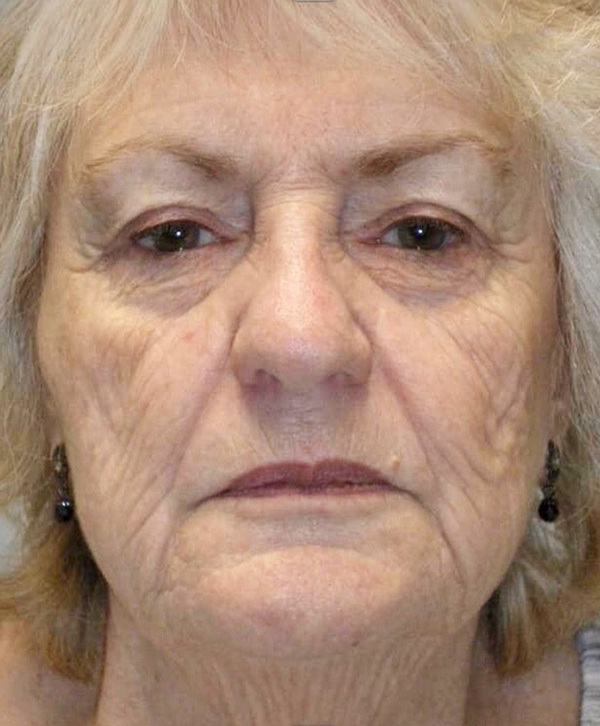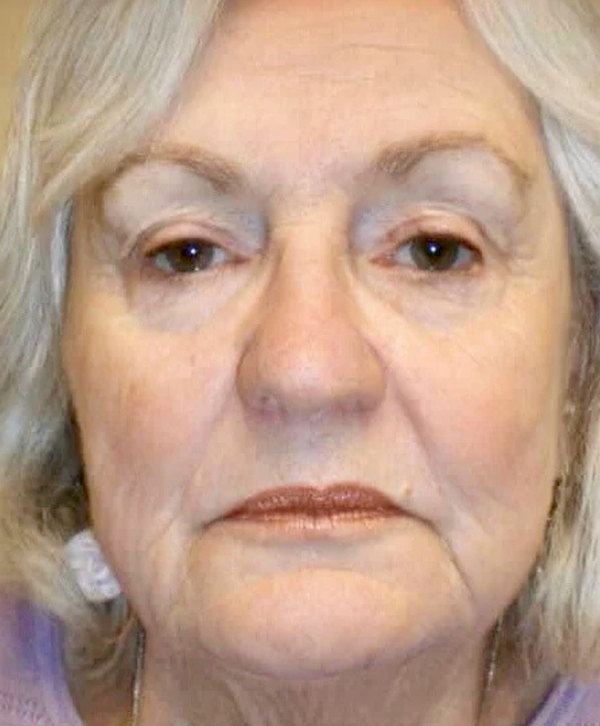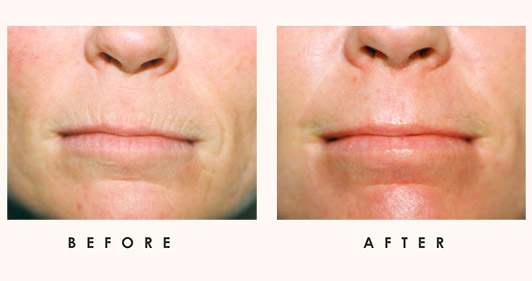Laser Resurfacing
Jump To
Freshen up your skin and reduce the deepening fine lines and wrinkles with laser resurfacing in Boise. This laser skin rejuvenation treatment also addresses other minor skin issues such as acne scars, skin discoloration, and uneven texture. Idaho Eyelid and Facial Plastic Surgery has the only fully ablative CO2 laser in Idaho, and our surgeons have the experience and artistic finesse to help you turn back the hands of time and achieve your best possible results. The damaged skin layers are removed and replaced with new growth, resulting in tighter skin and a more even complexion.


Laser Resurfacing
Laser resurfacing is a procedure that uses laser energy to gently remove skin layers. This process has many benefits including treatment of brown spots, redness, discoloration caused by sun damage and aging. It can dramatically reduce fine lines and wrinkles depending on the strength of the laser. Lasers can makes the skin look younger and removes blotches or scars caused by acne or too much sun exposure. It can be applied to the face, neck, decollette, hands, arms and other areas of concern. Patients who are interested in getting a laser resurfacing treatment can call Idaho Eyelid & Facial Plastic Surgery for a consultation.
What Is Laser Resurfacing?
Laser resurfacing treats signs of damage caused by sun exposure and aging. These include scarring, wrinkles, brown spots, and skin lesions. By gently removing layers of skin, these signs of damage can become less pronounced. New skin layers will replace the old, making the face look younger and rejuvenated.
How Does Laser Resurfacing Work?
Laser resurfacing uses laser beams to precisely remove skin layers on targeted areas of the face. This treatment can be used to reduce signs of aging around the eyes, nose, and mouth. Doing so encourages new skin growth, resulting in tighter, smoother skin. This treatment can also reduce discoloration and even out the patient’s skin tone.
Am I a Good Candidate for Laser Resurfacing?
The best candidates for a laser resurfacing treatment are patients with pronounced signs of aging. They have wrinkles, liver spots, laxity of skin around the eyes, and other types of blemishes. Patients with precancerous skin lesions can benefit from this treatment, as well. It is important to have realistic expectations.
A healthy lifestyle and a good skincare regimen (Obagi or Epionce lines, for example) will ensure that the results of the procedure last as long as possible.
Patients who currently have active acne are not good candidates for laser resurfacing. Excessive skin sagging or severe cases of deep wrinkles would also be discouraging factors. Patients who have very dark skin tones may not gain the same benefits from this treatment as those with lighter skin color.
Your Laser Resurfacing Consultation
During a consultation for a laser resurfacing treatment, a physical examination will be performed. Patients will be evaluated for skin tone as that determines the settings of the laser during the procedure. Patients will be evaluated for breakouts of acne, cold sores, or fever blisters. Patients will also be asked if they are taking any prescription medication. The patient’s medical history will be reviewed thoroughly to determine potential risk factors. This will include a discussion about any underlying conditions, past procedures, and allergies.
Preparing for Laser Resurfacing Treatment
It is important to prepare for your laser resurfacing procedure. If you are a smoker, you should stop smoking about two weeks before (as well as after) the procedure. Limit or avoid sun exposure to prevent exacerbation of UV damage on your skin.
Avoid taking any medications or supplements with blood-thinning properties, like aspirin, vitamin E, and ibuprofen. It is best to be well rested the night before your treatment.
Your Laser Resurfacing Session
The target areas are cleansed prior to the laser treatment. Photographs may be taken for before-and-after comparison. Depending on the extent of the procedure and the strength of the laser, patients of laser resurfacing will be given local or general anesthesia. A short-pulse laser is directed toward the targeted areas. This will result in eventual destruction of the top layer of the skin which peels off over time. Targeted treatments can last up to an hour or more.
Laser Resurfacing Aftercare
Downtime after a laser resurfacing treatment session is short. Expect swelling and itching for several days after your treatment. Ointments are applied during the recovery period. This will help keep the skin moisturized. Over the first few days, redness will appear and the top layer of skin crusts over and eventually falls off. Some patients find it beneficial to take pain medication for the first several days. Elevation of treated areas and cold therapy can aid the healing process.
How Much Does Laser Resurfacing Cost?
The exact cost for laser resurfacing will depend on many factors. Factors impacting price include the size of the area that needs treatment and the number of areas requiring treatment.
Frequently Asked Questions
-
What is laser resurfacing?
Skin resurfacing involves the reduction of wrinkles and discoloration of the skin via our fully ablative CO2 laser technology. The vaporization of damaged outer skin layers and tightening of the deeper layers achieves this effect. A healthy lifestyle and a good skincare regimen will ensure that the results of the procedure last as long as possible. Our office recommends and sells the regimens offered by the brands Epionce and Obagi. -
What causes wrinkles and discoloration of the skin?
A combination of genetics, sun, gravity, facial expressions, and aging cause wrinkles/discoloration. Pregnancy can also cause skin hyperpigmentation. Smoking can result in deeper lip lines and generally diminishes the quality of the skin. -
Who is a suitable candidate?
Anyone wishing to improve the quality of their skin is a candidate. Fair-skinned people with sun-induced fine to medium wrinkles are ideal candidates. Very deep wrinkles and folds associated with facial expressions are usually only partially corrected. Because of the fully ablative nature of the CO2 laser, neck skin is not an area suitable for treatment. Excess eyelid and eyebrow skin can be tightened to a degree using the laser. -
Payment?
A 20% non-refundable deposit is due when the surgery is scheduled. The remaining balance is due two weeks prior to surgery. We accept cash, check, Visa, MasterCard, Discover, and Care Credit. -
How do I prepare?
Pretreatment with exfoliating agents or Retin-A may be recommended. A bleaching agent may also be prescribed if you are not fair skinned. Antibiotics, antifungals, and antivirals are started the days before surgery if there is any history of acne or cold sores. You should buy soft cotton gloves to wear while sleeping to prevent scratching your treated skin. Wear a front opening shirt/blouse and do not use makeup the day of surgery. -
What anesthesia is used?
Local injections may be adequate for lower eyelid resurfacing, but IV anesthesia is required for full face treatment. Conscious sedation, or twilight anesthesia, is used which allows you to breathe naturally and sleep comfortably throughout the procedure. This adds approximately $1550 to the cost of your surgery, depending on how much of the face is treated. Payment for anesthesia is due the day of your procedure and payments are made to T-Medica Mobile Anesthesia. Anesthesia fees will increase if you opt to combine surgeries. -
Is skin resurfacing painful?
Some discomfort similar to a moderate sunburn is usually experienced the first 1-2 days. The skin may feel “tight” for several days. -
What will my recovery be like?
The skin should be covered during the first 6-9 days. A period of redness begins after the first week and lasts 2-6 weeks, but occasionally longer. This timeline can vary depending on your body’s healing and recovery rate. -
When are the follow-up appointments?
Most patients are seen at 3 days, 1 week, 2 weeks, 1 month, and 6 months. -
What are the risks?
Scarring is very rare but can occur with heavy treatment for deep wrinkles. Inform your surgeon if you form keloids. Hyperpigmentation can arise in the weeks following treatment. This is more common in dark-skinned individuals and usually resolves with bleaching agents. Some recurrence of wrinkles can occur, especially with lines of facial expressions. Hypopigmentation rarely occurs but is permanent. Dryness of the eyes and retraction of the lower lid can occur but normally resolve spontaneously. -
Where is the procedure performed?
The resurfacing treatments are performed at Idaho Eyelid & Facial Plastic Surgery, 111 West Main Street, Suite 200 in Boise. -
Why do our surgeons perform laser resurfacing?
Resurfacing allows the correction of crow’s feet and other fine lines of the face, which do not respond to traditional surgery. Our surgeons are trained in both the care of your eyes and in plastic surgery of the eyelids and upper/lower face. They have used lasers to treat the eyes and face for many years. Dr Boerner has used the CO2 laser for skin resurfacing since 1995.
Contact Us to Learn More
To schedule a consultation for laser resurfacing in Boise, call Idaho Eyelid & Facial Plastic Surgery. Patients can learn more about the treatment during their consultation and can ask any questions they may have.



